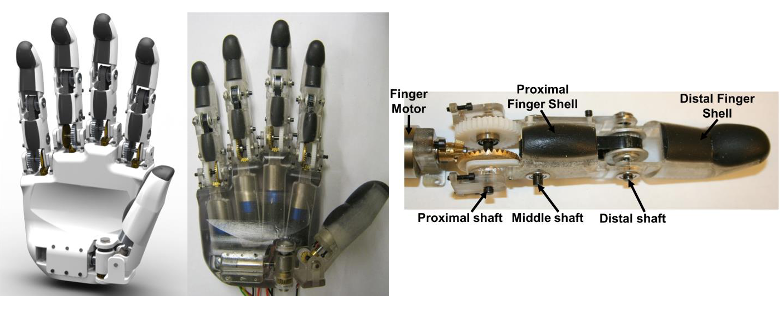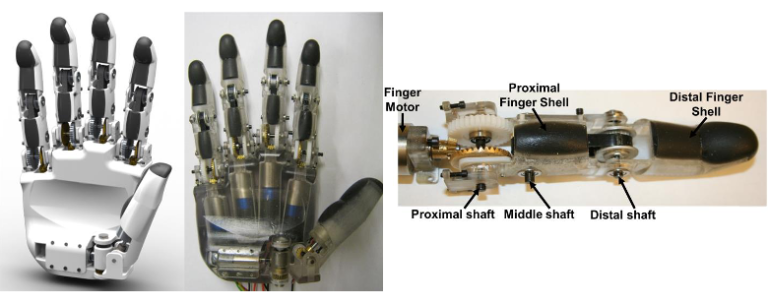
Currently, most externally powered prostheses are controlled using electromyography (or EMG), which is the measure of the electrical signals that are produced when voluntary muscle is contracted. One of the major problems is that there are a limited number of muscular control sites that can be used, which limits the complexity of the hands that are controllable. Many upper-limb prosthetics researchers are searching for methods to simply and effectively control complex prosthetic hands, and a significant number of these researchers have utilized virtual hands and other simulations to perform testing of these control algorithms (oftentimes on able bodied subjects). Thus, these control techniques remain firmly planted in the virtual realm, and the authors postulate that the development of a physical hand would help to validate results obtained through use of virtual hands and could help establish whether or not a given control scheme is realistically applicable for use by amputees. The development of such a hand would be beneficial for researchers in the field. A six degree-of-freedom hand was developed with such a purpose in mind, and two of the major goals of the project were that the hand be inexpensive and open source. The hand design is being shared on www.opensourcehand.wordpress.com.

